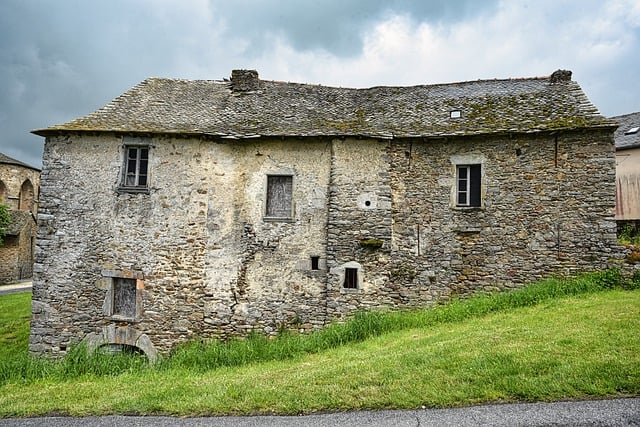Cool roof solutions, including reflective roofing systems and cool coatings, are transforming the industry by reducing heat absorption into buildings. These solutions keep properties cooler, lower energy consumption, and offer long-term performance benefits. Choosing the right option, such as white cool roof coatings or tailored reflective systems for commercial spaces, is crucial. Eco-friendly materials emit less heat and contribute to sustainability. Regular maintenance ensures these systems maximize energy savings and mitigate the urban heat island effect, proving beneficial in hotter climates with high concrete surfaces. Cool roofs are becoming a popular, effective, and aesthetically pleasing choice for both residential and commercial buildings.
“Discover the secrets to a durable and energy-efficient future with cool roof solutions. This comprehensive guide explores the transformative power of cool roofing in both commercial and residential settings. Learn how choosing the right installation method, leveraging reflective roofing systems, and embracing eco-friendly coatings can extend roof lifespans. From understanding the benefits of white cool roofing technology to examining real-world case studies, this article offers insights for anyone seeking long-term performance and sustainability through proper drainage and maintenance.”
Understanding Cool Roof Solutions and Their Benefits
Cool roof solutions have emerged as a game-changer in the roofing industry, offering both functional and environmental benefits. These innovative systems are designed to reflect a significant portion of sunlight, thereby reducing the amount of heat absorbed by the building’s structure. By installing cool roofs, whether for residential or commercial properties, building owners can significantly lower their energy consumption and contribute to a more sustainable environment.
The technology behind cool roof solutions involves various materials like reflective roofing systems, cool roof coatings, and white cool roofing products. These materials work together to create a surface that reflects sunlight, minimizing the urban heat island effect. This not only keeps buildings cooler but also reduces the demand for energy-intensive air conditioning systems. With their energy-efficient properties, cool roofs are an excellent choice for those seeking long-term performance and environmental stewardship.
Choosing the Right Cool Roof Installation Method
Choosing the right cool roof solution is paramount for achieving long-term performance and energy efficiency. Cool roofs, featuring reflective coatings or systems like white roofing, have gained popularity due to their ability to significantly reduce heat absorption, thereby lowering building temperatures and energy consumption. When selecting a cool roof installation method, consider both residential and commercial applications. For homes, cool roof coatings offer an affordable, low-maintenance option that still delivers impressive thermal resistance. In contrast, larger commercial spaces might benefit more from reflective roofing systems, which can be tailored to extensive areas with high solar exposure.
Eco-friendly materials and technologies are also becoming the norm in cool roof installation. These include advanced cool roof coatings that not only reflect sunlight but also emit less heat, contributing to a lower carbon footprint. Furthermore, proper maintenance is key to sustaining these benefits over time. Regular inspections can help identify potential issues early on, ensuring any repairs or re-coating are done efficiently, thus preserving the energy-saving properties of the cool roof system.
Maintaining Energy Efficiency with Reflective Roofing Systems
Reflective roofing systems offer an innovative solution to enhance energy efficiency in both residential and commercial buildings. These cool roof solutions are designed to reflect a significant portion of the sun’s radiant heat, thereby reducing the amount of absorbed heat transfer into the building. By installing cool roofs, homeowners and businesses can enjoy lower cooling costs and reduced carbon footprint. Cool roof coatings, often made from white reflective materials, act as an insulator during hot days, keeping interior spaces cooler and more comfortable.
The benefits extend beyond energy conservation. Eco-friendly cool roofs contribute to a building’s overall sustainability by minimizing the urban heat island effect, which can be particularly pronounced in areas with high concrete and asphalt surfaces. This technology is especially valuable for regions experiencing hotter climates, where traditional roofing systems tend to trap heat, leading to increased energy demands for cooling. Cool roof technology, with its ability to reflect sunlight, provides a long-term performance solution that not only reduces utility bills but also helps preserve the structural integrity of buildings.
Eco-Friendly Cool Roof Coatings for Longevity
Case Studies: Successful Commercial and Residential Cool Roofing Projects
In recent years, the adoption of cool roof solutions has seen significant growth in both commercial and residential sectors. These energy-efficient cool roofs are designed to reflect a larger portion of sunlight, reducing heat absorption and minimizing the urban heat island effect. Case studies demonstrate the remarkable performance of reflective roofing systems and cool roof coatings. For instance, a commercial building that implemented a white cool roof coating experienced a 30% reduction in summer energy costs, showcasing the significant financial benefits of this technology.
Another inspiring example is a residential neighborhood that opted for residential cool roof installation using advanced cool roof technology. The result was a collective decrease in local temperatures during peak hours, leading to improved air quality and reduced strain on cooling systems. These eco-friendly cool roofs not only contribute to sustainability but also set a precedent for future developments, emphasizing the crucial role of cool roof solutions in creating sustainable and livable urban environments.
